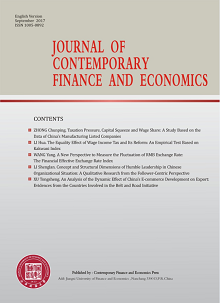|
|
A Comprehensive Evaluation of China's Provincial Ecological Pressure and Ecological Efficiency--Based on Ecological Footprint Method
WANG Junjie
2017, 0(1):
25-37.
This paper measures China's provincial ecological footprint per capita from 1995 to 2013 and the biocapacity per capita in 2009 based on the ecological footprint method. The results show that the per capita ecological footprint of most provinces and cities presents a rapid upward trend. The per capita ecological footprint is different greatly from province to province and the differences are not the same as that of their economic development levels. It can be seen from the per capita ecological footprint and the ecological capacity per capita that Qinghai, Yunnan, Guangxi, Heilongjiang and Gansu are faced with lower ecological pressures, while Tianjin, Shanxi, Shanghai, Shandong, Liaoning and Beijing are faced with high ecological pressures. In general, the ecological pressure on the developed regions is greater than that on the underdeveloped regions. The ecological efficiency of most provinces shows a rapid upward trend, with an average annual increase of 5.6%. The factor decomposition results show that, on the whole, the increase of ecological efficiency is the result of the increase in total factor productivity (TFP), the contribution of factor substitution is negative. This illustrates that China has not paid enough emphasis on eco-environmental protection. TFP growth rate increased significantly after China's entrance of WTO, but decreased after 2008. The negative growth of factor substitution mainly happened during the period of 2001-2008. From the perspective of factor substitution, the western region has paid least emphasis on eco-environmental protection, and only four provinces and cities, Beijing, Anhui, Yunnan and Liaoning, have paid enough attention to the eco-environmental protection in each stage.
References |
Related Articles |
Metrics
|

